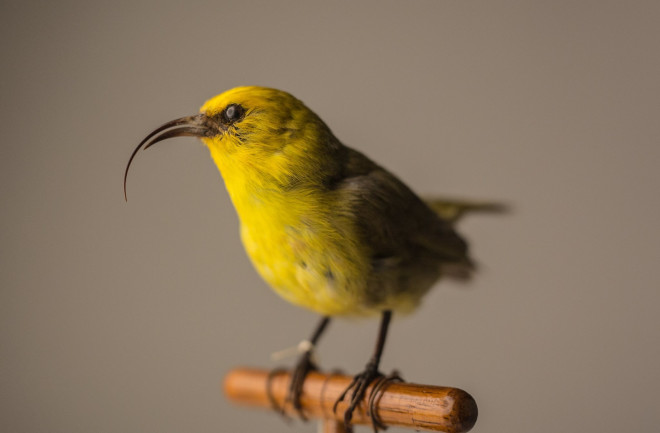There’s no way to sugarcoat it: Animal and plant life is declining across the globe at rates never seen before in human history. And alongside this decline, extinction rates are speeding up — as many as one million plant and animal species are at risk of being lost forever, according to a landmark United Nations report in 2019.
What’s more, humans may be uniquely responsible for fueling these losses. Activities like agriculture and aquaculture are changing the habitats of animals at an “unprecedented rate,” according to the report, converting once-flourishing ecosystems into hubs of human development. Direct exploitation of organisms — like logging, hunting and fishing — are also to blame, alongside climate change, pollution and the spread of invasive organisms.
And while global extinction rates can vary drastically, many scientists think that we’re in the midst of a sixth, human-caused extinction — comparable to the event that obliterated the dinosaurs some 65 million years ago.
How Many Animals Go Extinct Every Day?
The U.N. report estimates that dozens of species are going extinct every day. Beyond that, the report also notes, as many as 30 to 50 percent of all species face extinction by 2050.
Other estimates are similarly mind-boggling in scope. Harvard biologist E. O. Wilson says that 30,000 species per year are being driven to extinction. That’s a rate of 82 species per day. (Or, if you want to get even more granular, four species every hour.) For comparison, according to one estimate, Earth’s “normal” (or background) rate of extinction prior to human activity is about one species out of one million species per year. That means that flora and fauna may be disappearing up to 1,000 times higher than they have throughout history.
Such figures can sound startlingly precise. But pinpointing the exact rate of extinction is likely impossible: Scientists have only catalogued a fraction of Earth’s flora and fauna. In 2022, over 2.161 million species were identified and listed in the IUCN Red List, which tracks and updates the number of described species based on reports from taxonomists. Scientists estimate that there are well over 8 million species alive today — a figure that is also wildly far-ranging.
“If some alien version of the Starship Enterprise visited Earth, what might be the visitors' first question?” asks ecologist Robert May in a paper in Science. “I think it would be: ‘How many distinct life forms — species — does your planet have?’ Embarrassingly, our best-guess answer would be in the range of 5 to 10 million eukaryotes (never mind the viruses and bacteria), but we could defend numbers exceeding 100 million, or as low as 3 million.”
What Animals Are Extinct?
What’s more, it’s not a simple task for researchers to show that a species has disappeared forever. The process is costly, time-consuming and labor-intensive, requiring extensive survey efforts and often fruitless searching. As such, scientists are cautious about prematurely moving a species into the “extinct” category.
Read More: Scientists Might Bring Back These Extinct Animals
You can see this for yourself when searching through the IUCN Red List, which lists nearly 4,000 animal species as critically endangered, meaning they face a high risk of extinction in the wild. Many of these listings note the last time that a particular animal or plant was sighted by scientists — a date that is often years or even decades ago.
Take, for example, the Itatiaia highland frog (Holoaden bradei), located solely in the mountains of southeastern Brazil, which is listed as critically endangered (and possibly extinct.) But although it hasn’t been seen in the wild since 2004, it still hasn’t earned the “extinct” designation. In other words, we’ve likely lost plenty of species in recent decades that are still waiting to be categorized.
Still, while it’s relatively rare for scientists and wildlife officials to formally give up hope on a plant or animal, there are plenty of species that have been declared extinct in recent years. In 2021, the U.S. Fish and Wildlife Service announced its plans to declare the extinction of 23 wildlife species.
Read More: The 5 Mass Extinctions That Have Swept Our Planet
Animals Close to Extinction
Here are some of the birds, fish and other species that are expected to be removed from the Endangered Species Act:
The ivory-billed woodpecker, once the largest species of woodpecker in North America. Although researchers and birders alike claim to have spotted it in recent years, its last widely-accepting sighting was in Louisiana in 1944.
The Scioto madtom, a nocturnal catfish once found in Ohio’s Big Darby Creek. Known to hide beneath rocks or in vegetation during the day, it's been (officially) unseen by human eyes since 1957.
Eight species of freshwater mussels, including Mississippi’s flat pigtoe and the yellow-blossom pearly mussel, formerly found in Tennessee and Alabama. Freshwater mussels — which rely on clean, healthy streams and rivers — are among the most threatened species in the U.S.
What Animals are Going Extinct?
Given the sheer scope of today’s biodiversity loss, determining which animals are going extinct is a daunting task. More than 500,000 land animals, according to the U.N. report, don’t have enough natural habitats to sustain their long-term survival. Over 40 percent of amphibian species are also threatened with extinction.
Still, the report does offer slivers of hope. In rare instances, governments have acted to protect certain threatened species, like the Seychelles magpie robin or the Arabian oryx, even bringing them back from the brink of extinction.
The Arabian oryx — a visually-striking antelope with distinct, ringed horns and the national animal of Qatar — had been hunted almost to extinction by the 1970s. But luckily a historic conservation effort restored the animal's population to its desert homeland.
Read More: Scientists Are Trying to Save These Animals From Extinction



